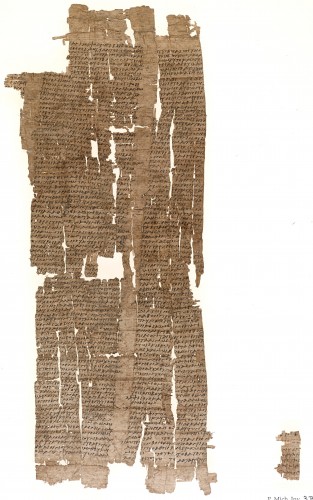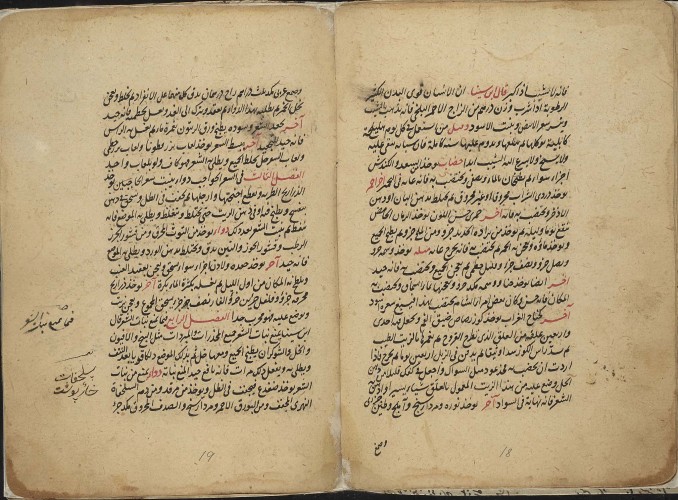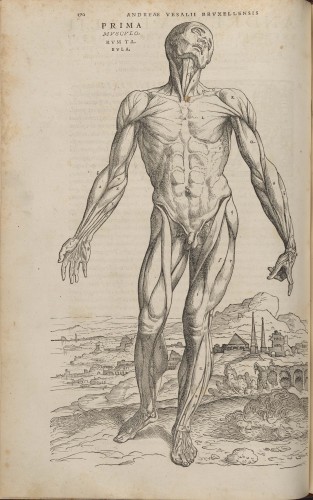I am pleased to showcase a student critique of the current exhibit, The Art and Science of Healing: From Antiquity to the Renaissance. Students of professor Aileen Das' class, Ancient Medicine in Greece & Rome, visited this exhibit at the Kelsey Museum of Archaeology last February. They were assigned with the fascinating task of examining this display from various angles, not only from the perspective of the visitor but, more interestingly, also from the view of the exhibit curator. As I guided their visits, I tried to reconstruct for them the different stages involved in the making of this exhibit, from the original idea that I probably wrote on a napkin, to the aesthetics of the display room and the painful selection of the witnesses of the story I wanted to tell: the artifacts themselves! But let us now hear Shannon's critical reaction:
Commonalities in the evolution of Medicine
By Shannon Ryan
The Kelsey Museum of Archaeology and the Hatcher Graduate Library partnered with guest curator Pablo Alvarez to put up the special exhibition, The Art and Science of Healing: From Antiquity to the Renaissance. Divided into five parts, the exhibit explores the connection between what most would consider “rational” medicine and religion and magic. Each part contains its own important themes and discoveries relating to the overall concept. Medical papyri, amulets, and early medical tools and books are some of the artifacts on display. Alvarez worked to create the following narrative: as we travel throughout history from antiquity to the Renaissance, we can discover reoccurring themes in science and medicine.
The exhibition is divided into two sections: one residing at the Kelsey Museum and the other at the Hatcher Library. The Kelsey Museum houses the first four parts: Religion, Magic, and Healing, Graeco-Roman Medicine, Islamic Medicine, and Medieval Medicine. With the help of informational banners hanging from the ceiling, visitors follow a winding path through each period of history. Beginning the exhibit with the area containing information on Religion, Magic, and Healing, visitors see the connection of gods to healing in ancient Egyptian culture. For example, depictions of the Egyptian gods Horus and Anubis on amulets, or wearing amulets themselves, show their connection to the art of healing and medicine. Continuing through this portion of the exhibit, various amulets and incantations are on display. Amulets relating to uterine ailments, stomach aches, and general protection can all be seen in this area of the exhibit. Additionally, papyri containing both medical remedies and healing spells show the direct connection between medicine and magic during that time.

Pedanius Dioscorides of Anazarbus (ca. AD 40-90). On Materia Medica. 2.76.2; 7-18. Papyrus. Second half of 2nd c. AD. Egypt. Greek. P. Mich. inv. 3
Moving into the Graeco-Roman Medicine area, this period is most directly related to the development of rational medicine with authors like Hippocrates, Galen, and Dioscorides. Samples of their writings can be seen in this section of the exhibit. A papyrus fragment of Dioscorides’ On Materia Medica contains information regarding the medical uses of animal fats. In brief, Graeco-Roman medicine is shaped by the founding and expansion of the Roman empire, which involved many wars. Representing that aspect of history, descriptions of treatments of battle wounds and trauma are presented with the display of ancient arrow heads, missiles, and slings. This period is also illustrated by some ancient medical tools along with text explaining the use of some of them.
The Islamic Medicine section includes solely books. This is meant to show that during that time medical knowledge was spread to different areas of the world through translations into different languages. Most of the manuscripts contain pharmacological information, a continuation of the growth of this tradition from the end of the Graeco-Roman period. One of the manuscripts is an Arabic translation of one of the works attributed to Galen.

Pseudo-Galen
Asrār al-nisāʼ. Arabic; 1492
Manuscript codex on Persianate paper; 183 x 130 mm
Isl. Ms. 1058
Another is a treatise of “Prophetic Medicine” which aims to use the Qur’an and Sunnah to develop medical ideals that are closely related to Islam.
Medieval Medicine saw the continuation of translation of both ancient and Islamic works from Arabic into Latin. Additionally, human anatomy was taught at a university level based on Galen’s texts and human dissections. Along with texts on anatomy and surgery, this part of the exhibit shows that there is still talk of medical astrology, fever amulets, and even the use of the word “abracadabra” for treatment of illnesses. The exhibit at the Kelsey ends with replicas of some Renaissance woodcuts representing the human body, urging people to visit the other part of the exhibit housed in the Hatcher Library. These illustrations also show the continuation of interest in anatomy into the Renaissance period.

Woodcut from Andreas Vesalius (1514–1564)
De humani corporis fabrica libri septem
Basel: Johannes Oporinus, 1543
The Lewis Stephen Pilcher Collection

Above is a series of reversed-image reproductions based on six woodcuts of “muscle men” from Andreas Vesalius’ masterly treatise on human anatomy, De humani corporis fabrica libri septem (Basel, 1543). Learn more on this project here
Overall, the exhibition does a wonderful job exploring connections between medical treatments practiced in different periods. As mentioned above, items considered to be magical like amulets and incantations are continuously present throughout history. They are seen in ancient Egypt, spoken about in the Graeco-Roman period, and still mentioned in medieval medicine. Pablo Alvarez did a wonderful job of choosing artifacts that were not only representative of each time period but also showed the overarching connection between them all. At the end of each section of the exhibit, an artifact or print from even a later historical period is displayed. These pieces illustrate that the themes relevant to a particulat time still persisted afterwards. For example, the woodcuts at the end of the Religion, Magic, and Healing area depicting the “Zodiac Man”, Urine Charts, and “The Phlebotomy Man” are all from the 1500s. In other words, the items displayed on these fifteenth-century woodcuts are inspired by medical treatments practiced at an earlier time in history. Additionally, the information for each object is easy to understand by the general public, providing enough description about the piece to comprehend its importance and why it was there. In general, it can be difficult to insure that each item is explained sufficiently without making its description impossible to understand. Throughout the entire exhibit, however, appropriate information was provided not only for each artifact, but also about each of the time periods covered.
Nevertheless, there were some aspects of the exhibit that did not work as successfully. The layout is somewhat difficult to follow. At the beginning of each period, there is a banner hanging from the ceiling with an overview of that period, the title of each period being in a different color. Connecting each color to the relevant display case in the form of a colored label or text would have helped visitors to identify the chronology of cases and artifacts more easily. Also, near the beginning of the exhibit there was a variety of items on display, while as history progresses it seemed that there are only books. While the importance of the books is indeed emphasized, some other types of artifacts could have been included to make the display more engaging, rather than having a large collection of medical works written in languages that almost nobody can read.
All in all, the special exhibition The Art and Science of Healing: From Antiquity to the Renaissance, takes its visitors on a chronological journey throughout history by highlighting common themes and elements that are characteristic to each period. In comprehensible language and with a variety of artifacts, ranging from ancient Egypt to medieval Europe, the exhibit shows how the medical tradition persists and develops throughout several centuries of history.
The Art and Science of Healing: From Antiquity to the Renaissance
Kelsey Museum of Archaeology & Audubon Room at the Hatcher Library
February 10-April 30 2017
Visit the online version of the exhibit here